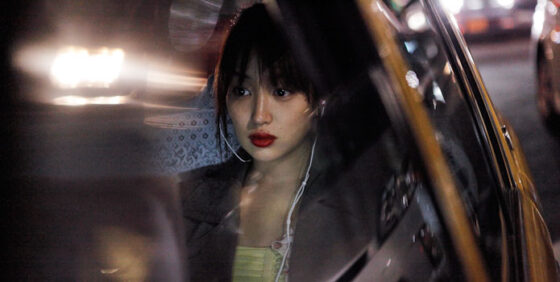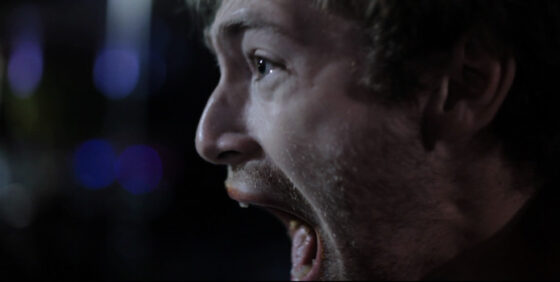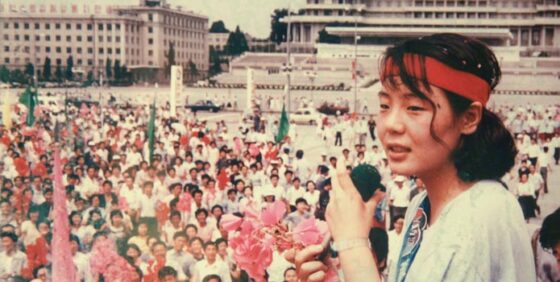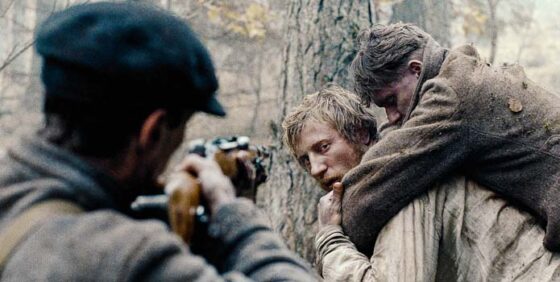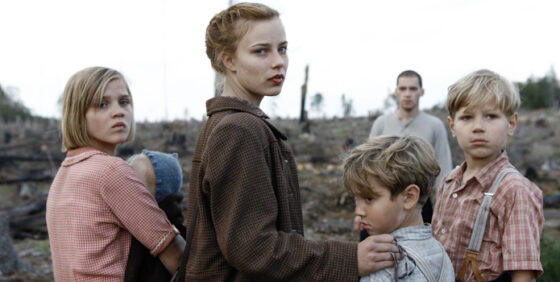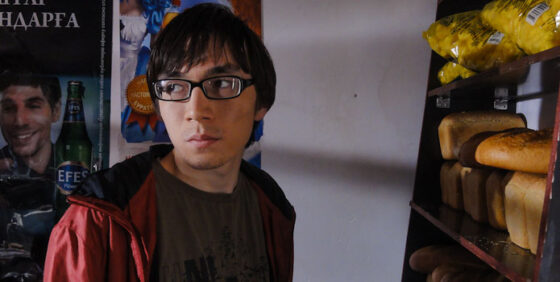TIFF Preview -2: Après mai | Like Someone in Love | At Any Price | Berberian Sound Studio | Boy Eating the Bird’s Food | The Girl from the South | In the Fog | Jump | Lore | Me and You | Outrage Beyond | Reality | Student
Cinema Scope 52 Preview
Après mai (Olivier Assayas, France)—Masters
By Andrew Tracy
As one is virtually a companion piece to the other, it is only natural to begin discussion of Après mai (Something in the Air) with Olivier Assayas’ 2002 memoir A Post-May Adolescence, just published in an elegant English translation by the Austrian Filmmuseum to accompany their new, Kent Jones-edited anthology on Assayas. Eloquent and thoughtful, Assayas’ remembrances of coming of age during the long, dispiriting hangover from May ’68—the “years of lead” during which the radical left lost its momentum in the face of a reinvigorated mainstream consensus, its massed forces drifting away while the remainder responded with an ever more divisive ideological rigidity or, at the furthest edge, the nihilistic impotence of terrorism—is nostalgic absent the accompanying sentimentality. This allows Assayas to not only speak hard truths about the time, but to avoid the knee-jerk condemnations of the leftist movement so common from recanted soixante-huitards (or post-soixante-huitards). Self-confessedly something of a coaster on the receding waves of revolt (“my largely anecdotal career as a Leftist,” as he says), Assayas attests to the power of image—in some cases a decidedly reactionary kind of image—in attracting youth to the movement. He recalls his admiration for the tough, non-ideological militancy of the Katangai squatters, and even now professes “a certain, instinctive sympathy” with the Red Army Faction and its analogues, for at least having the “lucidity” to grasp that action was the sole remaining proof of life for a movement that had reached its point of disappearance.
Lucidity, indeed—though of a considerably more productive order—is one of the two poles of Assayas’ intellectual and aesthetic position. Fuelled by the not-yet-canonical Homage to Catalonia and Orwell’s brand of anti-totalitarian Leftism and relentless moral clarity, Assayas reserves his greatest scorn for those Stalinist and Maoist adherents who refuse to acknowledge the evident truths about the regimes to which they adhere, deriding Solzhenitsyn’s Gulag Archipelago or Simon Leys’ 1971 exposé of the Cultural Revolution as CIA propaganda. (Assayas has his onscreen vicar reading the Leys book in a scene midway through Après mai, eliciting just such a charge.) “I have never hated anything as much as I loathe wilful blindness to reality, the denial of fact, ideological madness and the distortion of the world,” he writes. Curious (or appropriate?), then, that his other intellectual position is premised precisely upon a transformation of that reality; or, rather, an unveiling of the actual real behind that surface we are conditioned to call “reality.” “[There is] a moment when oneself is not much more than a tissue of intuitions and potentialities in search, less of a template that would allow us to read reality, than an angle, a point from which to see it in such a way that it renders up the meaning we knew without knowing[,] opening for us where previously it had only been closed,” writes Assayas. “Situationism was to be this point for me.” For Assayas, the Situationist notion of art as social practice is embodied in the process of filmmaking, which itself is “a double movement: the one the embodiment of writing—more intimate, the part where meaning takes shape—the other of action, where, precisely beyond meaning, through day after day of shooting, the fragments of a total art practice inextricably entwined with reality take shape.”
While one should always take filmmakers’ readings of their own practice with a healthy dose of scepticism, Assayas’ eloquent pronouncement may indeed help account for the elusive, light-fingered nature of his auteurism, a distinctiveness that is at least partially defined by self-effacement. Accordingly, Après mai’s nostalgia trip is oddly free of self-indulgence: from scene to scene, Assayas strikes a remarkably sustained balance between bittersweet remembrance and distanced reportage. The almost inescapably teleological imperative of all autobiographical fiction is balanced here by a curious yet disinterested observation of people in the moment. So many narratives of the radical era depict it as a delimited region of time, a fixed temporal entity to be grown into or out of; for Assayas, it is an impress that indelibly marks its eager young material, but also adheres to their own particular contours.
Certainly not the makers of their time, Assayas’ alter ego Gilles (Clement Metayer) and his proto-militant cohorts—the dispossessed heirs of an almost-revolution, fighting to prolong its dying reverberations—are neither its passive symptoms. While the film’s early movements adhere, competently if unremarkably, to the template of other circa ’68 tales—a street battle against les flics, cell meetings, and leaflet distributions, all anchored to our young hero’s blossoming relationship with the idealistic young Christine (Lola Créton) after he receives a Dear Gilles missive from his vacationing girlfriend, the moneyed, long-tressed goddess Laure (Carole Combes)—it begins to reveal its true, fissiparous shape after Gilles and company hit the road for summer vacation, following a serious incident during a confrontation with the school’s “fascist” security guards. Heading down to Italy, meeting and crashing with fellow travellers along the way, the expanding and contracting group begins to feel out the diverse possibilities afforded them by the combinations of their political convictions and personal inclinations. Assayas, while still keeping Gilles as the locus of his story, begins to disperse his subjectivity, and his sympathies, along these variously diverging paths: Gilles’ increasing, distressingly “bourgeois individualist” commitment to painting and illustration, allowing Assayas to pay brief homage to Bresson’s Quatre nuits d’un rêveur (1971); a journey of spiritual self-discovery in India undertaken by Gilles’ fellow artist friend (echoing Assayas’ own teenage sojourn there); Christine’s collaboration and eventual cohabitation with the leader of a militant filmmaking collective; the progressively harder-line militancy of another comrade, who tries to recruit Gilles for an act of political terrorism. Adjacent to these ideological iterations is Gilles’ nocturnal reunion with the returned Laure, who has fallen into a world of apolitical, hard drug-fuelled bohemianism that yields another of Assayas’ lyrical party sequences in a palatial country house—though this one with an unexpectedly conflagratory conclusion.
With none of these threads does Assayas identify the “correct” or “incorrect” response to the legacy of May. Without scanting the anomie and lack of direction that the restitution of “normality” wrought on those too young to participate in the original upheaval, Assayas intimates that the true “outcome” was precisely the sum of the innumerable individual trajectories that trailed away from that moment of extraordinary, revelatory collision. As with Philippe Garrel in Les amants réguliers (2005)—the obvious/inescapable point of comparison—Assayas in Après mai is concerned to show the persistence of the post-May moment (for what is life but persistence), and that the dissolution of the movement was as much a transformation of its impetuses as it was, perhaps, a defeat. Yet while it’s easy to commend Assayas’ lack of editorializing, it also contributes to a certain lack of affect. Whereas Garrel’s dreamy yet rigorous formalism in Les amants created and sustained a narcotic thrall throughout its lengthy running time, Assayas’ clipped, elliptical briskness keeps his young devils (probably) at a remove that, this time, is more pictorial than dramatic; they’re objects to be regarded rather than the scattered, imperfect, overflowing beings that, as much as anything, is Assayas’ signature.
But just as L’heure d’été (2008) gave the appearance of a polite French art-house export while subtly evolving into something more complex and irresolvable—a cunningly modest form of Situationist détournement, one could say—Après mai grows larger, and closer, in the rearview. As the film enters its final movements, with Gilles working on a film set in London and haunting avant-garde screenings in his off hours, Assayas refuses his young vicar a conclusion (or even a definite direction) to his sentimental education. Even as his path becomes clearer, Gilles remains bound to a yearning extraneous to his “natural” progression and self-realization. It was this inchoate longing that drove both May and the long post-May, and as Assayas elegantly attests in his final sequence (the film’s one rupture from realism), it is a longing both impossible to encapsulate in fleeting material reality and impossible not to see as such, beckoning just outside of one’s grasp.
Like Someone in Love (Abbas Kiarostami, Japan/France)—Masters
By Richard Porton
“How is a woman like a book?” goes the first line of a joke that Akiko (Takanashi Rin)—the heroine of Like Someone in Love—never finishes. This sort of elliptical teasing is both Akiko and Abbas Kiarostami’s characteristic modus operandi. Moving on to Tokyo from the sun-drenched Tuscany of Certified Copy (2010), what is implied, or left out, of the film’s narrative is as, or more important, than the plot details that remain. Akiko has second thoughts about finishing the joke because, oddly enough, she fears that Takashi (Okuno Tadashi), an ex-professor and her elderly and decidedly needy client, will find it too salacious. The opacity of this exchange, deflecting both overt humour and slowing down the narrative flow, is part and parcel of what many at Cannes found infuriating about Like Someone in Love; it’s also what proves crucial to the film’s intrinsic appeal.
Although Certified Copy also received a mixed reception at Cannes, its allure as a gentle incarnation of the “mindfuck” genre imbued it with a certain cachet. In some respects, Like Someone in Love is more challenging viewing precisely because there’s nothing obtrusively clever or manipulative about it. Kiarostami seems, at least at first glance, to be primarily preoccupied with transforming the hooker-with-a-heart-of-gold genre—however subtly reformulated—into a cerebral study of the ambience of deluded love and the entanglements that result from mutual misunderstandings. Although Variety’s Guy Lodge termed the film an “unofficial sequel” to Certified Copy, Like Someone in Love, which is equally parsimonious in its narrative revelations, ultimately doesn’t give the audience the solace of playing along with a screwball brain-twister. It ends up as a kind of absurdist noir where good intentions are rewarded with grim retribution; when Takashi murmurs “Que Sera, Sera” toward the end of the film, it’s an indicator of Kiarostami’s stoic fatalism, not a Doris Day-like optimism.
The depiction of a certain ambience is an integral part of the film’s aesthetic. Objections to the film included accusations that it treads water with a wafer-thin conceit or that this age-old tale of an old man’s deluded infatuation with a young woman is both hopelessly clichéd and irredeemably sexist. Yet leaving aside the admittedly quite creaky narrative appurtenances, the film’s consistently playful formal strategies generate head-scratching delight. From the outset, the film’s first scene in a chic Tokyo bar establishes a kind of verbal ping-pong that is reinforced by Kiarostami’s persistent deployment of shot/reverse shot editing preferences. Although “motivations” and “backstory” are effaced in this stripped-down odyssey of a Tokyo call girl, a kind of free-flowing erotic frisson predominates. As Akiko conducts a gossipy chat with her pal Nagisa (Mori Reiko) and eludes the watchful glance of Hiroshi (Denden), the bar owner and her pimp, their conversations are subsumed by jazz standards piped in on the establishment’s sound system. Even if all we know is that Akiko is frantically deceiving her perpetually jealous boyfriend Noriaki (Kase Ryo), and the specifics of her history in the sex trade remain murky, the sound mix makes the opening sequence unremittingly immersive. Just as the title implies a kind of performance and the importance of an “as if” scenario—i.e., what it might be like to be “someone in love”—the fact that the diagetic background music is much more alluring, and in fact more significant, than the perfunctory dialogue suggests that viewers are being alerted to pay attention to conflicts that lie beneath the surface of polite chatter.
For a film in which impersonation, mistaken identities, and self-delusion are prominent motifs, the milieu of prostitution offers a highly appropriate backdrop. All of the protagonists seem bereft of basic self-knowledge and the subterfuge demanded by the hooker demimonde provides a paradoxical means of stripping away layers of bad faith. The events leading up to a supremely anti-climactic sex scene at Takashi’s house is a case in point. More interested in having Akiko consume an elaborate dinner than seducing her, the grandfatherly Takashi seems to balk when it comes time to consummate their faux-love affair. Giving primacy to his point of view, we see a blurry image of Akiko shedding her clothes as reflected in a mirror. Ella Fitzgerald’s rendition of the title song, a backdrop for romance, infuses their role-playing with a wistful quality at odds with the rather pathetic reality of two people working at cross-purposes. Takashi, a former sociology professor, eventually drives Akiko, the dutiful, although rather dense sociology student (she has trouble differentiating Darwin from Durkheim; a corollary on an intellectual level to the film’s preoccupation with blurred identities) to her university for an examination. The resulting excursion, replete with non-sequiturish dialogue and a cinematographic style that emphasizes the pseudo-couple’s reflections in the car window, resembles a muted parody of Taste of Cherry (1997); instead of metaphysical preoccupations, their journey generates a semi-farcical web of confusion.
Like Amir Naderi’s Cut (2011), another recent film made in Japan by an Iranian director, Kiarostami employs a rather schlocky narrative schema as a means of exploring, and exploding, cultural contradictions. Kiarostami has long been known for his respect, even reverence, for Ozu’s legacy (his 2003 DV film Five was an extended Ozu tribute) and at times Like Someone in Love resembles an Ozu film drained of the bickering, but still loving, families, that populate his greatest work. Some of the offscreen characters in fact resemble ghosts from an Ozu film: Akiko’s grandmother, who the harried call girl regards as a nuisance, and Takashi’s late wife, whose photograph has a place of pride in his book-lined house. (Akiko is almost her doppelgänger in the form of a sex kitten.) Of course, any of the secular transcendence promised by these nods to Ozu is obliterated in a lengthy conversation between Takashi and Noriaki, Akiko’s prickly fiancé. For the duration of their colloquy, since Noriaki remains convinced that Takashi is her benevolent grandfather, not a hapless john, the young man is unfailingly obsequious. Yet when the truth is revealed, the residue of the traditional Japanese respect for elders is thrown out the window and Noriaki falls pretty quickly into inchoate rage. Continuing the film’s ironic preoccupation with windows and mirrors as bearers of misleading information, Takashi’s nosy female neighbour—conspicuously framed in a window—eventually succeeds in completely misconstruing his relationship with Akiko. As Kiarostami once observed, “We can never get close to the truth except by lying.”
For those enamoured of the more measured epiphanies of Taste of Cherry and The Wind Will Carry Us (1999), the brutal, unsubtle conclusion of Like Someone in Love comes as a shock. It appeared that Kiarostami self-consciously manufactured a violent ending that unapologetically punishes the film’s protagonists, as well its spectators. Nevertheless, there’s something strangely invigorating about the superficially clunky and disorienting ending’s arbitrariness. Whether the film’s unexpected coda is viewed as a cry of despair or a capricious revenge on ambiguous characters, there is something admirable about Kiarostami’s blatant chutzpah. In a gushy essay in the press book that ultimately goes so far as to compare Kiarostami’s mise en scène to Tourneur and Preminger, Pierre Rissient detects, and celebrates, a “gnawing depravity” in Kiarostami’s recent work. What is more refreshingly depraved than celebrating that eternal scapegoat, the dirty old man?
At Any Price (Ramin Bahrani, USA)—Special Presentation
By Angelo Muredda
Where to begin with Ramin Bahrani’s ghoulish new film, as self-consciously American as an apple pie laced with firecrackers and a handgun? Why not the start, an insultingly programmatic home movie of Iowan seed farmer Henry Whipple (Dennis Quaid, inexplicably doing Jack Nicholson in Five Easy Pieces) joshing with his two legacy-squandering boys, one an all-state football star turned mountaineer, the ingrate, and the other a NASCAR hopeful portentously named Dean (Zac Effron). Last seen aping Kiarostami in Goodbye Solo, Bahrani can’t decide this time if he’s making a bad Nicholas Ray movie —all lusty men, wayward youngsters, and maimed bodies —or a ham-fisted satire of Reagan’s “Morning in America” ad, exposing the seedy underbelly of the smiling Midwestern farmer. Either way, there’s little room in his America for women: Heather Graham and Maika Monroe have the most to do as a pair of tragic blondes; you can’t blame poor Efron for failing to tell them apart at one point, since they’re both playing The Decatur Broad at different ages. (At least Graham gets a hilarious sex scene in front of the family corn mound, unsubtly rhymed with Efron’s fistfight in the cornstalks a bit later on.) If there’s any pleasure to be had here it’s in the howlers, none better than Dean’s damning assessment of his errant brother: “Why do you think he’s on top of a mountain, and never calls?”
Berberian Sound Studio (Peter Strickland, UK)—Vanguard
By Christoph Huber
“Don’t be afraid. A new world of sound awaits you. A new world that requires all your magic powers.” Those welcoming words for British sound engineer Gilderoy (Toby Jones) prove providential. Brought to Rome under rather murky circumstances to work on a ’70s Italian horror film, the displaced, downsized, diminutive fish out of water is soon sucked into the weird world of illusions. Like Hélène Cattet’s and Bruno Forzanti’s equally experimental and enjoyable Amer (2009), Peter Strickland’s surprising second feature Berberian Sound Studio, almost exclusively set in the title location, is both an avant gardist-modernist spin and a heartfelt love-letter to the giallo genre, which is posited as an irresistible vortex. The film within the film is even called The Equestrian Vortex, attesting to the sense of humour Strickland brings to the proceedings: although this impossible tale of witchcraft and violence, poultry and passion overwhelms the protagonist’s psyche, it remains unseen—save for a glorious credits sequence doubling as Berberian’s.
A moody, darkly funny chamber play with themes of alienation and exploitative working conditions (feeling surprising contemporary) bubbling under a sly genre veneer, Berberian Sound Studio is also a remarkable experiment in displacement, deliberately delving into paradox. As Gilderoy, haunted by memories of the “Donkey Green” near his native Dorking, is removed from his existence, the beautiful visually and aurally conceived sequences of Berberian Sound Studio are overpowered by the fragments of Equestrian. Sound supersedes image, as its ingenious hands-on production is celebrated in all its absurdity, from a frying pan’s “big sizzle” for the infamous red-hot-poker-in-vagina scene to countless vegetable massacres (with Massimo & Massimo’s melon mutilation demonstration a particular highlight). For all his heartfelt (if coolly modulated) fervour, Strickland maintains a skeptical stance, but one thing remains sure: there can never be enough Toby Jones.
Boy Eating the Bird’s Food (Ektoras Lygizos, Greece)—Discovery
By Jay Kuehner
Theatre director Ektoras Lygizos’ stark allegory is naturally timely, given the current Hellenic crisis, though Boy Eating the Bird’s Food seems to be channelling Knut Hamsun’s 19th-century novel Hunger by way of Bresson and Bach arias. Yorgos, a young man with an angelic voice and baby’s eyes (a well-cast Yannis Papadopoulos) can’t hold down a job in modern Athens—itself an as-yet-unspoiled space of hotel lobbies, copasetic apartments, and mall escalators—while caring for a small pet bird and an elderly neighbour in the absence of any immediate family. With scarce context but ample observation, the film limns a portrait of degeneration at its cruel inception, as young Yorgos struggles to maintain home utilities and is reduced to sharing seeds with his caged bird. (That his ultimate austerity measure plausibly entails dieting on his own ejaculate will unnecessarily become one of the film’s greater talking points.)
Taking shelter amid the rubble of a deserted basement—its crumbled statues a fitting tableau of former glory now in ruins—Yorgos wraps his caged bird in a Greek flag and tapes it tight. “I won’t let the cats get you,” he whispers, though it is he who most needs protection. His stalking of a female clerk at an upscale hotel is rewarded with a can of beer, a warm meal, and the possibility of sex, but the reluctant martyr is hollowed out by hunger and wracked with grief. Lygizos’ finale is steeped in a liturgical glow, however materialist: Yorgos’ ultimate cry for mercy among the pews issues like ethereal birdsong, to no appreciable narrative consequence, but it does not go unheard—the grace note to Lygizos’ compelling if wildly indefinite parable.
The Girl from the South (José Luis García, Argentina)—TIFF Docs
By Diego Brodersen
The first third of documentarian José Luis García The Girl from the South, shot by the director in the late 1980’s on a very lo-fi video camera, shows images of Pyongyang during an international youth summit sponsored by the moribund USSR, a few months before the fall of the Berlin Wall. García, as a last minute addition to that delegation of socialist youngsters, was then witness to the speeches of the (once) famous Lim Su-kyung, a young girl that crossed the heavily guarded frontier between South and North Korea, the ultimate test of her pro-reunification activism. (International audiences will not recognize among the Argentinian visitors the young selves of a very well-known politician and a journalist, not known nowadays for their communist tendencies). Some 20 years after this event, García and a small crew travelling to Seoul in search of the elusive Lim, who spent some years in jail after being accused of spying activities. What follows is a dance of words between director and subject, with some of the most important questions left unanswered. Why did she do it? How does she feel about it looking back? What does she think about the political situation in the two Koreas these days? At some point, the film itself feels like a doomed project, until Lim suddenly appears in Buenos Aires, a turning point that would be too much to accept if this was a fiction film. The Girl from the South’s fragile narrative has a lot to offer to those who are not expecting explanations, but are open to a discussion of the difficulties involved in shooting a documentary film. In other words, this is documentary filmmaking at its most self-reflexive.
In the Fog (Sergei Loznitsa, Germany/Russia/Belarus/The Netherlands/Latvia)—Contemporary World Cinema
By Robert Koehler
The insurgency battle of Byelorussians against Nazi German troops in 1942 represents, on its surface, a battle of fundamental opposites and moral certainties, above all the justified resistance of the beleaguered invaded against a ruthless invader. In the greatest film response to this historically pivotal moment, Elim Klimov’s Come and See (1985), the moral distinctions are in place, yet shattered by the overwhelming nightmare of total war experienced by children. Nearly thirty years later, and a generation-plus past the USSR’s fall, Sergei Loznitsa’s response to the same war is considerably more ambiguous, as the title (adopted from the Vasil Bykov novel Loznitsa has adapted) rather overtly indicates.
It’s probably unfair to expect that Loznitsa would match the astonishing bravura of his previous narrative feature, My Joy (2010), which probably captures the crazy Russian gestalt of the moment better than any other recent movie both in its elusive (and seductive) form and themes involving murder and paranoia. In the Fog doesn’t go as far, but it does impress with its dramatic precision and focus on three men involved in a complex game of blame-taking, revenge-killing and misunderstood motives amongst Byelorussian rebels. It also features the power and thrall of Oleg Mutu’s characteristically intense widescreen cinematography, which Loznitsa uses to frame and imbue his plan-séquence stagings with a steady beat toward doom.
Jump (Kieron J. Walsh, Ireland/UK)—Contemporary World Cinema
By John Semley
An impoverished network narrative riff tracing the goings-on of a group of friends and pursuing gangsters, as they run around a small Northern Ireland town on New Year’s Eve, Jump opens with Greta (Nichola Burley) attempting to toss herself off a bridge, before she is stopped by beat-up local Pearse (Martin McCann), who enlists her in a plot to avenge himself on a local mob boss (Lalor Roddy), who, incidentally, is Greta’s deadbeat dad. Elsewhere, two dressed-down revellers get drunk, drive, and hide the body of a local they run over, while two criminal underlings scramble around town trying to track Pearse. Director Kieron J. Walsh jumbles up his timeline, presumably to maximize the impact of the film’s various unearned reveals. It’s more confusing than anything, given that it takes two-thirds of Jump’s blissfully brief 84 minutes to situate these characters in temporal relation to one another. All the wild-night wackiness ostensibly orbits around Greta, a voguish depressive burdened by her negligent father on one side and the memory of her dead mother on the other. But the character barely registers anything beyond the twenty-aught ennui she establishes up front, after which she is left to drift around between Jump’s secondary players, mostly following the whims of her manic pixie-dream-boy redeemer. While it’s intermittently funny hearing young women call each other “dicks,” Jump’s overlapping drama is so overwrought, and the relentless piling on of strained twists and “revelations” so enervating, that the whole is worthy of little else but indifference. “Nothing’s real. It’s like a film,” offers Greta in her turgid opening voiceover, “I just want the show to be over.” Indeed.
Lore (Cate Shortland, Australia/UK/Germany)—Special Presentation
By Celluloid Liberation Front
In Lore, Australian director Cate Shortland follows five children traversing a devastated Germany in spring 1945 after their Nazi parents have fled the approaching Allies. As Germany stomachs the bitter taste of occupation, the five kids, led by the eldest sister, a 14-year-old girl named Lore (Saskia Rosendahl), face the collapse of the order under which they were raised and the menacing uncertainty of what will follow. Post-Nazi Germany is a thankless place to come of age, yet the fact that Shortland approaches her subject on the same aesthetic terms of her debut, the teen flick Somersault (2004), is a bad omen. Pastoral compositions and an oneiric photographic palette hardly convey a sense of what is supposed to be a terrifying journey into the unknown. The figure of Thomas—a young Jewish man who helps the Aryan siblings on their odyssey—while supposedly crucial to Lore’s ethical rebirth, is stale and stereotypical. Though Shortland’s intent to look into the unresolved contradictions of the immediate postwar period is praiseworthy, the same cannot be said of the final outcome.
Me and You (Bernardo Bertolucci, Italy)—Masters
By Nadia Baldini
This year we’ve witnessed the death throes of two minor masters of Italian cinema, shown with great pomp and circumstance at official Cannes screenings, both of which felt more like high-class funerals: Dario Argento and his atrocious Dracula 3D, and Bernardo Bertolucci and his miniscule Me and You, which he, too, had hoped to shoot in 3D. The parallelism could not have been more perfect, as Bertolucci is to auteur cinema what Argento is to genre movies.
Bertolucci is one of the last mannerist and cinephile filmmakers of modern cinema, whose body of work exhibits an admiration for (and sometimes imitation of) Pasolini, Godard, Antonioni, and Visconti. His first film La commare secca (1962) had already dealt with the subject of death at work. Me and You, made after nine years away from film, with Bertolucci now confined to a wheelchair for the rest of his days, is meant to prove that he can still make films. This chamber piece about a pair of adolescents of questionable, acne-ridden charm, caught up in drugs, incest, and hysteria, adds nothing to the director’s past glories, and even make Besieged (1998) and The Dreamers (2003), both of which come across as the work of an elderly man, seem like masterpieces of vitality and invention. Does Bertolucci intend to show us his disgust for contemporary Italy by keeping his unbearable young protagonists shut up in a cellar? Arguably Woody Allen’s worst film, From Rome with Love, is a far better (if unintentionally so) document of the decline and vulgarity of a country and its cinema that the Italian filmmaker no longer dares to confront. Me and You is nothing but a pointless testament to Bertolucci’s own decline. The only memorable sequence in this dreary film gives us the Italian version of David Bowie’s “Space Oddity.” It’s not enough.
Outrage Beyond (Kitano Takeshi, Japan)—Special Presentation
By Mark Peranson
Or, Get Otomo. Or, Beat Returns. Kitano Takeshi’s best film in a decade or so, Outrage Beyond is to the pretty lousy Outrage (2010) as Johnnie To’s career-capper Election 2 (2006) is to Election (2005). Ultra-sparse, tough as nails, and wavering between droll and laugh-out-loud funny, Outrage Beyond begins five years after the events of the first film, quickly establishing the corporatization of the yakuza, who, like Japan, have fallen on hard financial times. Tokyo’s Sanno clan is now lorded over by Kato and his slick, younger underboss Ichihara; a restructuring of the executive board is underway, with a merit-based system that benefits those with hedge fund-managing experience. Backroom machinations, secret alliances, backstabbing (well, back-shooting)—to a certain extent, it remains business as usual, and a deliberate build-up that is more than a bit confusing for everyone who missed Outrage, let alone those of us who had to sit through it.
Pay no mind: Outrage Beyond shifts into high gear when Otomo (Beat Takeshi, excellent) comes onto the scene, released from prison thanks to weaselly corrupt cop Katakoa, whose own devious machinations are more devised to earn himself a promotion than to topple the Sanno and Osaka-based Hanabishi clans. Otomo soon hooks up with old rival Kimura (who bears intricate facial scars resulting from his last encounter with Otomo), and the two forge an alliance that moves beyond strategy into true brotherhood. Soon after Otomo utters—seriously—“I’m getting too old for this shit,” his return and Kataoka’s plotting impel the narrative into a prolonged stretch of nasty, brutish, and often short murders, though Otomo has more stylish plans for the two top Sanno, one of which involves baseball (and I will say no more). A film with exactly two female minor characters, one of whom is a whore, Outrage Beyond is the most surprising and satisfying when it enters the arena of male emotional bonding (albeit involving some gory self-mutilation). The conclusion is extremely satisfying.
Reality (Matteo Garrone, Italy/France)—Special Presentation
By Jason Anderson
When it comes to invoking Big Brother-inspired despair, Matteo Garrone’s Cannes Grand Prix winner is only half as sharp and barely a tenth as funny as the impeccably bitter final “Christmas” episode of Ricky Gervais’ Extras. Poor Andy Millman’s self-hating stint in the camera-packed house with the usual gaggle of idiots was the most fitting way to cap off his rise and fall in the TV world, where celebrity status has never been more attainable or more fleeting. Perhaps that’s why the most endearing character in Reality is its most Millman-esque figure: Enzo (Raffaele Ferrante), a former Big Brother contestant living the not-so-high life of paid appearances at nightclubs and weddings, where he invariably trots out his English-language catchphrase (“Never give up!”) before dashing off in the direction of the next paycheque.
It’s unfortunate that Garrone doesn’t choose to follow him there. Instead, we’re stuck with Luciano (Aniello Arena), an affable fish seller in Naples whose brief meeting with Enzo during a wedding stop sparks an increasingly self-destructive quest to become part of Big Brother Italy’s latest cast.
Of course, the chaotic apartment where Luciano lives with his wife, kids and extended family is already a more crowded and dowdier version of the iconic Big Brother house, and is presented with a masterful sense of space by Garrone and his longtime cinematographer Marco Onorato. But after a seemingly promising audition for the show in Rome, Luciano loses all interest in the more prosaic world he knows, going so far as to sell the fish stand so that he’s ready once he gets the call. Convinced that people from the show are observing him to make sure he’s the right match for the show, he performs ever more public acts of altruism. While some of this makes for half-decent Capra-corn—the scenes of Luciano getting right with the local bums is straight out of a ’30s comedy—it also requires viewers to accept that Luciano’s all-consuming obsession robs him not only of his wits and common sense but all of his previous personality traits as well.
It just gets sillier and sloppier from there, which is all the more disappointing given the sense of economy and discipline Garrone displayed in Gomorrah (2008) as well as the wry humour that distinguished his earlier festival hit The Embalmer (2002). Reality’s bluntness as a religious satire—with the Big Brother house being equated with Heaven on more than one occasion—is another unwelcome surprise, especially since it mars the film’s many good scenes with a condescending attitude that extends beyond Garrone’s characters to his viewers. Reality television may be the end of culture as we know it, but at least it never risks being patronizing to the folks out there in the dark.
Student (Darezhan Omirbayev, Kazakhstan)—Masters
By Boris Nelepo
With his Crime and Punishment riff Student, Darezhan Omirbayev completes his trilogy of adaptations of Russian classics after 2007’s Shuga (based on Anna Karenina) and his short film of Chekhov’s About Love for the Jeonju Digital Project in 2006. Student features a typical Omirbayev protagonist, a detached, slouching young man confronted with the primitive nature of evil. He drags on in his wretched existence in a room he rents in a suburb of Almaty, where the stratification of contemporary Kazakh society is plainly evident in the expensive foreign-made cars that cruise the streets and the walls plastered with ads for perpetually out-of-reach products. The young man makes some extra cash working a part-time job in film production (Omirbayev plays the director in a cameo role), where for a minor blunder—he spills coffee on an actress’ dress—security beats him up. At the university, he is lectured about competition being the foundation of modern society, which seems to inspire this modern-day Raskolnikov to his murderous venture.
Beginning with July (1988), Omirbayev has deliberately positioned himself as a disciple of Robert Bresson, and Student is stocked with Bressonian echoes: the horse in the novel’s famous beating scene is replaced with a donkey, an intentional reference to Au hasard Balthazar (“We feel sorrier for the donkey,” Omirbayev explains), while the conclusion alters the novel’s ending to show the protagonist behind bars, a nod to the final scene of Pickpocket. A colleague of mine even wondered, after watching the film, whether Student was primarily a re-visioning of Bresson rather than Dostoyevsky. Well, why not: the experiment in succession to the French classic is quite interesting, and Omirbayev’s thrifty habit of using only the indispensable means of expression have made the deceptively humble Student a breath of fresh air in Cannes, where the exact opposite type of film was praised: the pompous, loud, and smug.
And yet I’m progressively less enthusiastic about each new Omirbayev feature, because he’s caught up in a pattern he invented a long time ago. Student is his most explicitly political film: the director juxtaposes the protagonist’s crime to the assassination of JFK, the final monologue is a lashing-out against the bombings of civilians, and a visit by George W. Bush is broadcast on TV as a reference to Napoleon, who is mentioned in Crime and Punishment. One would hardly expect the author of the stunning Kaïrat (1992) and Cardiogram (1995) to reduce Dostoyevsky to a simple anti-capitalist poster.
cscope2


